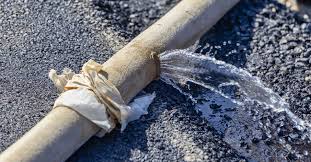Dealing with a bathroom leaking issue can be frustrating and costly if not addressed promptly. Whether it’s a dripping faucet, a leaking pipe, or water seeping through the floor, identifying and fixing the problem early can save you from extensive damage. In this guide, we’ll explore the common causes of bathroom leaks, how to diagnose them, and step-by-step solutions to resolve the issue.Common Causes of Bathroom Leaking
- Faulty Faucets: Worn-out washers or seals in faucets can cause constant dripping.
- Leaking Pipes: Corroded or damaged pipes often lead to water leakage.
- Showerhead Issues: Loose connections or worn-out gaskets can cause leaks.
- Toilet Leaks: A faulty flapper or fill valve can result in water wastage.
- Grout and Caulk Damage: Cracked grout or caulk allows water to seep into walls or floors.
How to Diagnose a Bathroom Leak
- Check for Visible Signs: Look for water stains, mold, or peeling paint.
- Inspect Faucets and Showerheads: Turn them off and check for drips.
- Examine Pipes: Feel for moisture or look for corrosion.
- Test the Toilet: Add food coloring to the tank; if it appears in the bowl without flushing, there’s a leak.
- Monitor Water Meter: Turn off all water sources and check if the meter still runs.
Steps to Fix a Bathroom Leaking Problem1. Fixing a Leaky Faucet
- Turn off the water supply.
- Disassemble the faucet and replace worn-out washers or seals.
- Reassemble and test for leaks.
2. Repairing Leaking Pipes
- Turn off the main water supply.
- Replace damaged sections of the pipe or use epoxy putty for minor cracks.
- For severe corrosion, consult a professional plumber.
3. Addressing Showerhead Leaks
- Tighten the showerhead connection with a wrench.
- Replace the gasket if necessary.
4. Fixing a Leaky Toilet
- Replace the flapper or fill valve if they’re faulty.
- Ensure the toilet tank isn’t overfilling.
5. Sealing Grout and Caulk
- Remove old grout or caulk with a scraper.
- Apply new grout or caulk and smooth it with a tool.
- Allow it to dry completely before using the bathroom.
Preventive Measures to Avoid Future Leaks
- Regularly inspect bathroom fixtures and pipes.
- Replace worn-out parts promptly.
- Use high-quality grout and caulk for tiling.
- Consider installing a water leak detector.
When to Call a ProfessionalWhile minor leaks can often be fixed DIY, some situations require professional help:
- Extensive pipe damage or corrosion.
- Leaks behind walls or under floors.
- Persistent leaks despite repairs.
ConclusionA bathroom leaking problem can escalate quickly if ignored, leading to water damage and higher utility bills. By identifying the cause early and following the right repair steps, you can resolve the issue efficiently. For complex problems, don’t hesitate to seek professional assistance to ensure a long-term solution.

